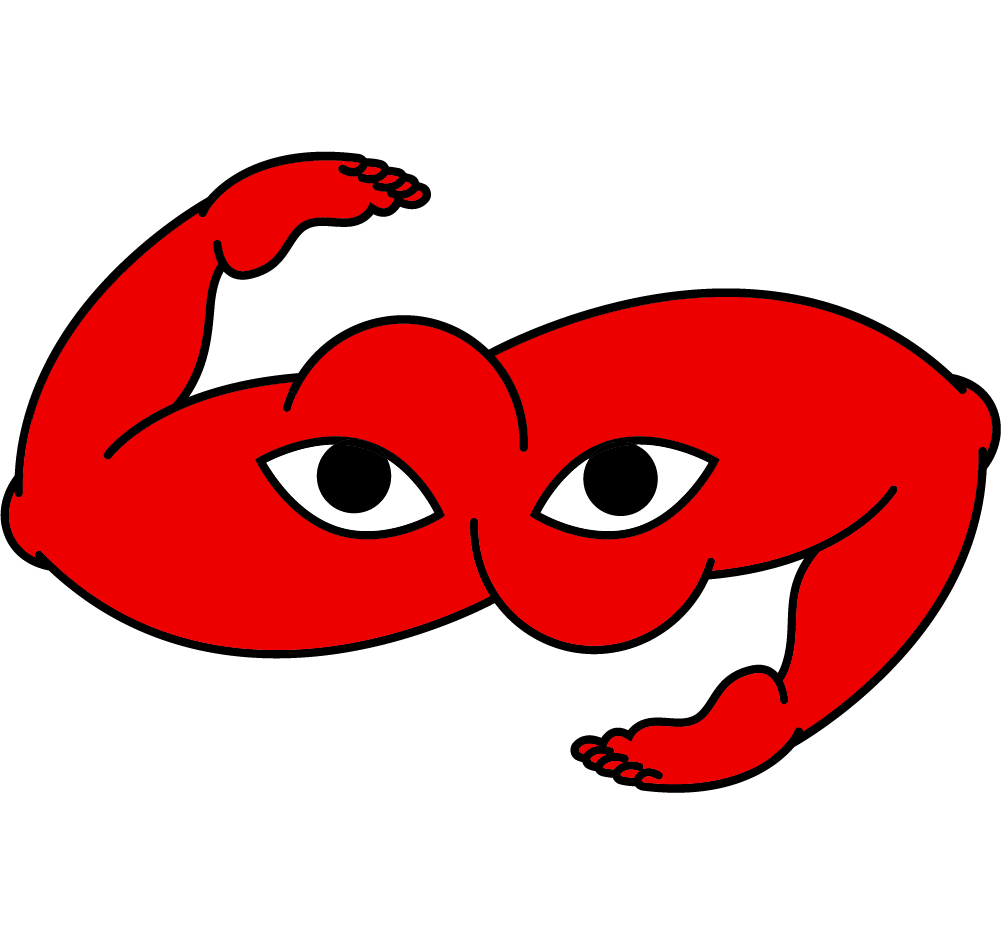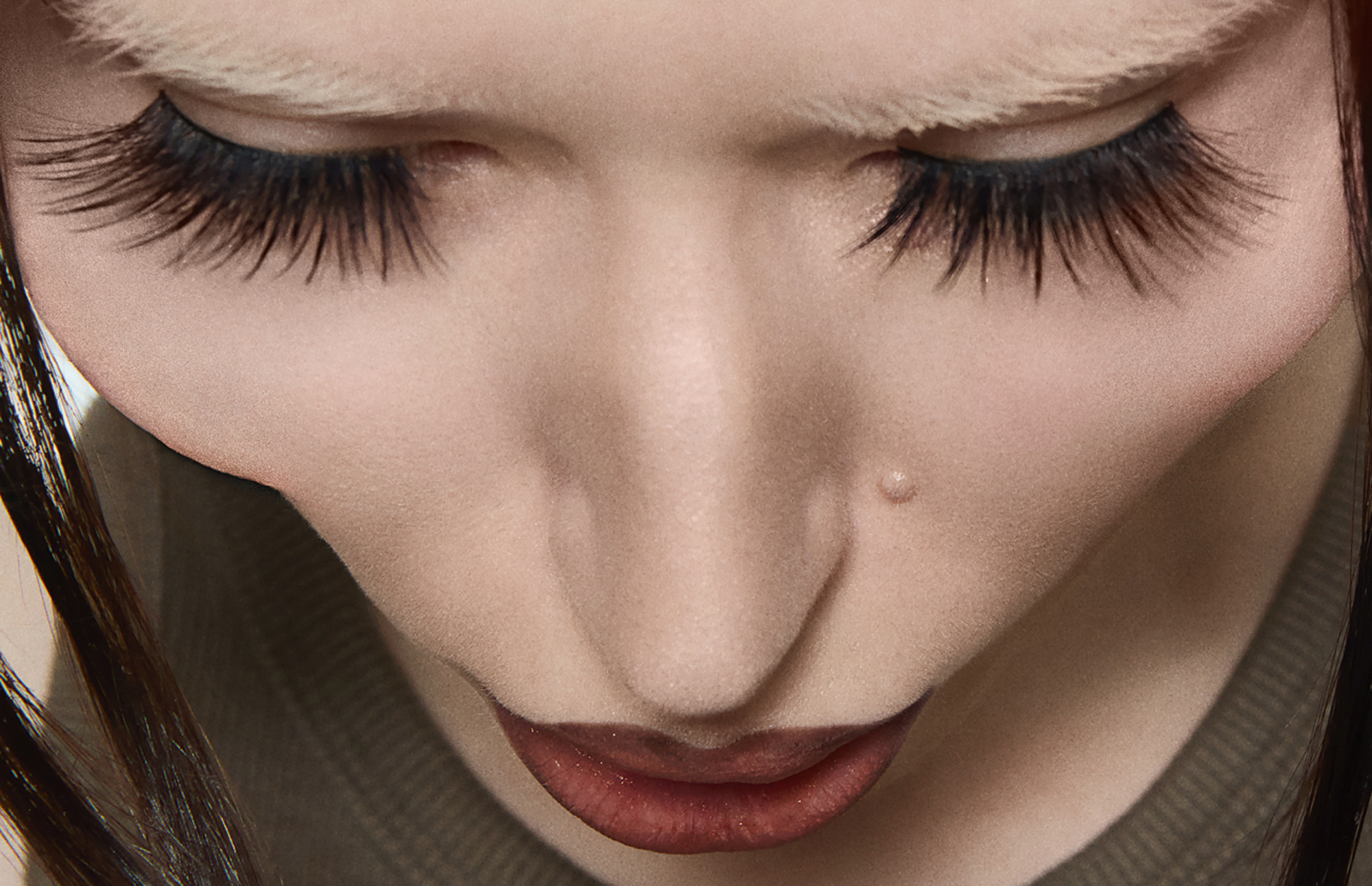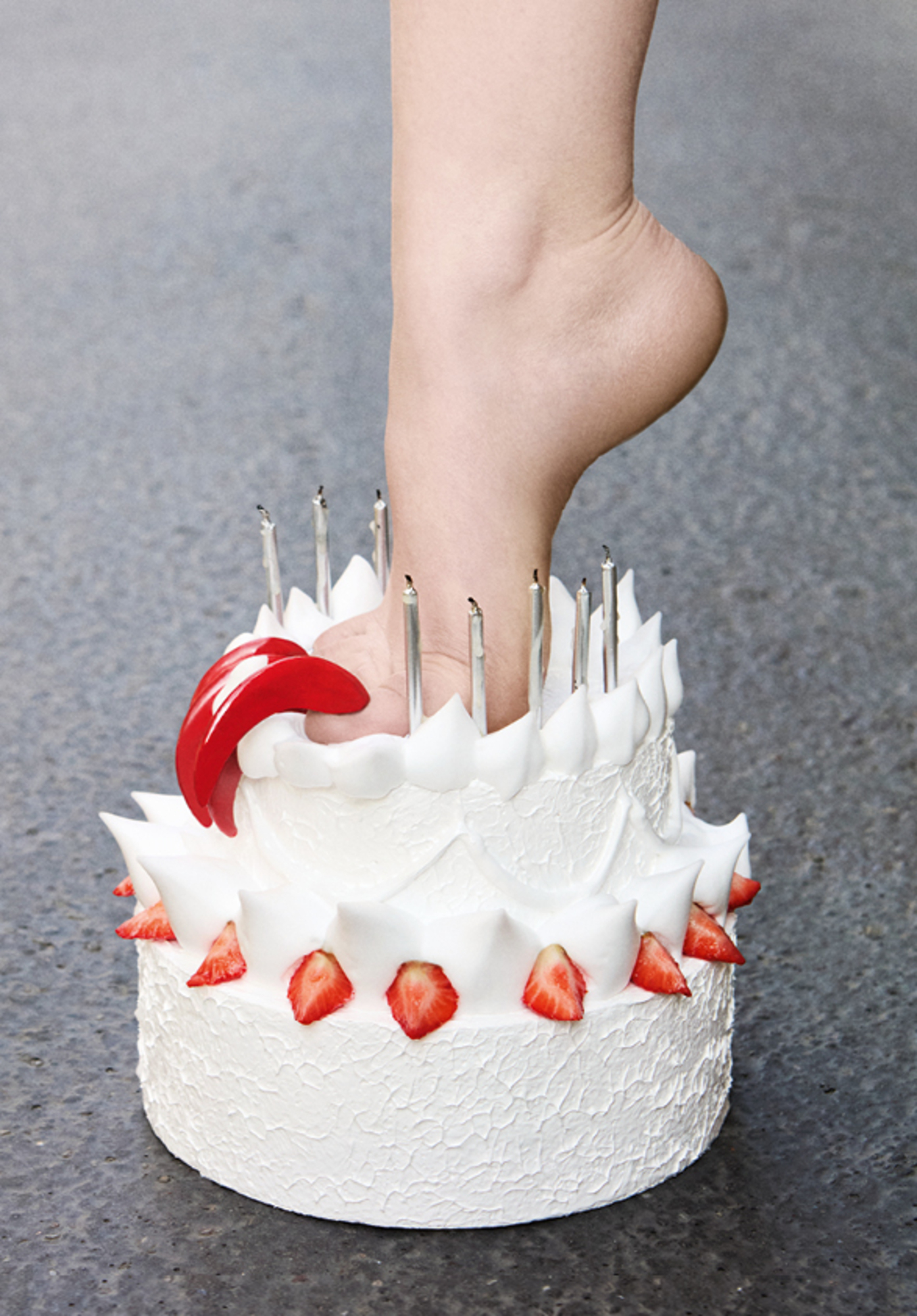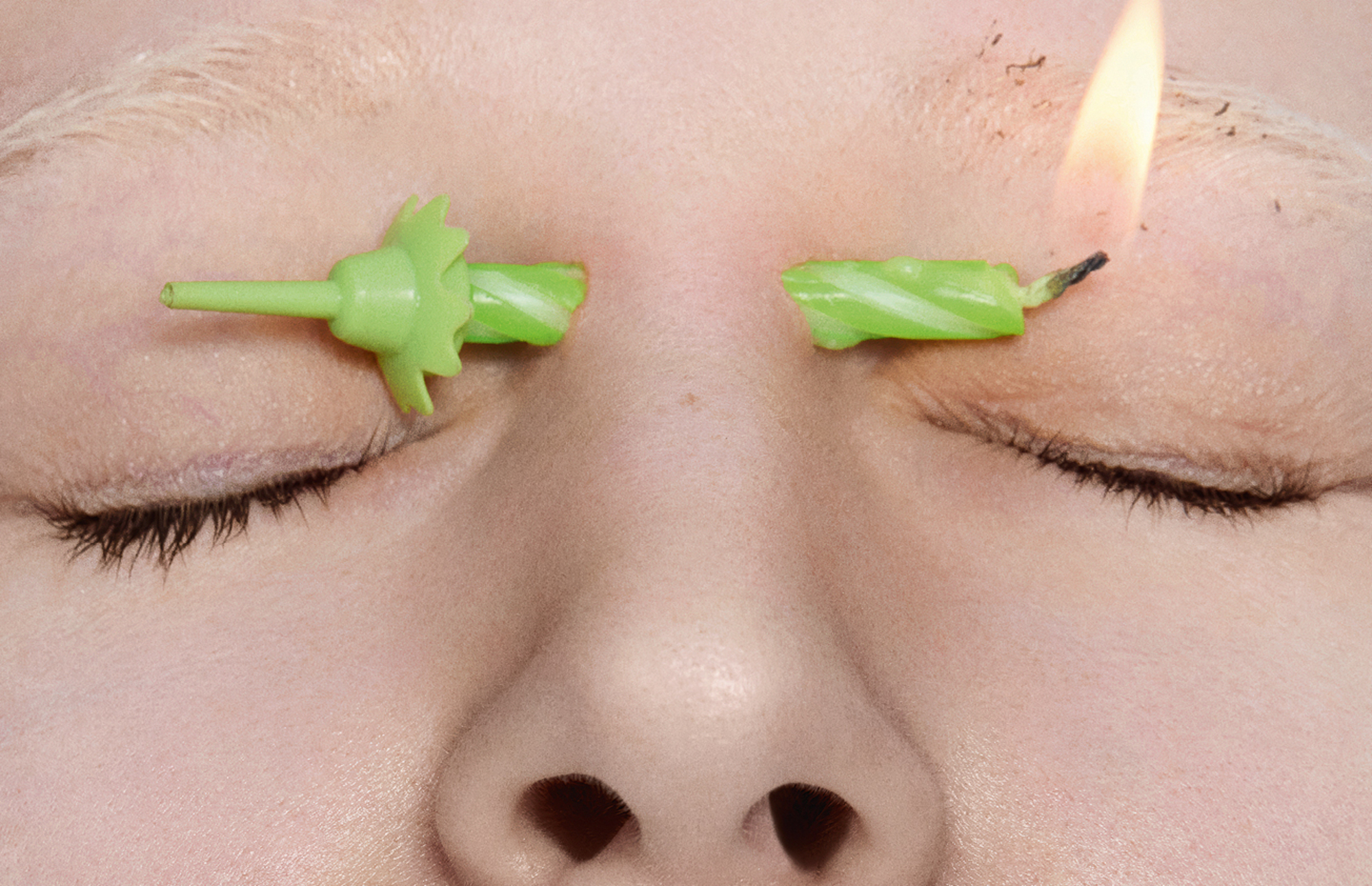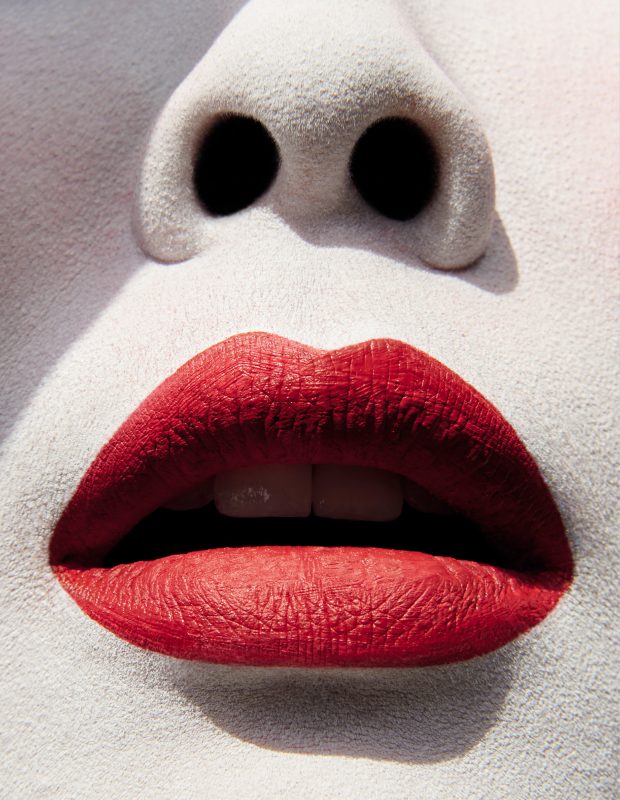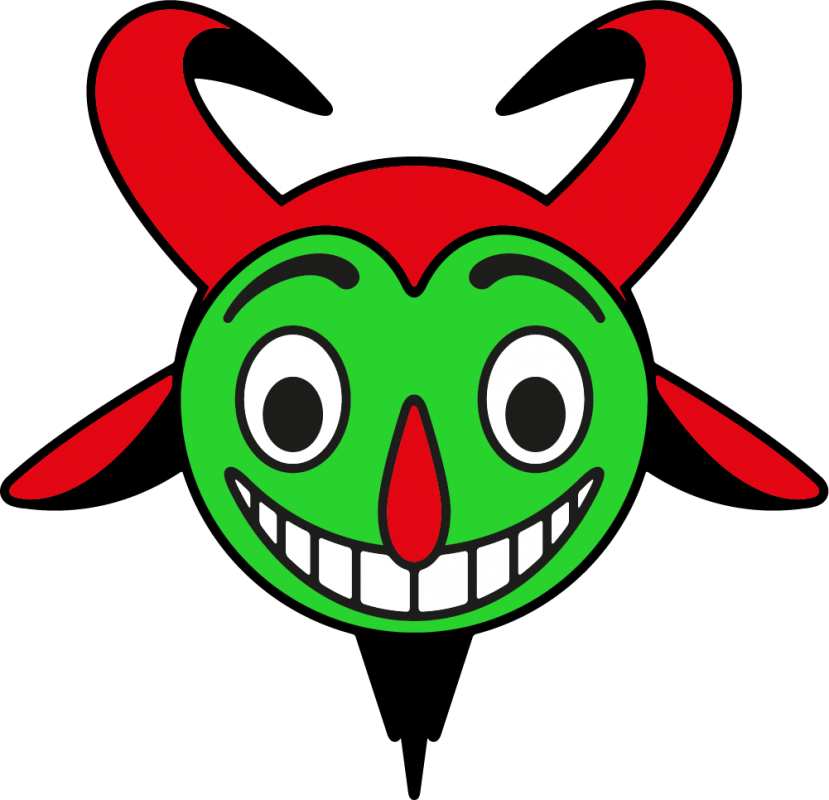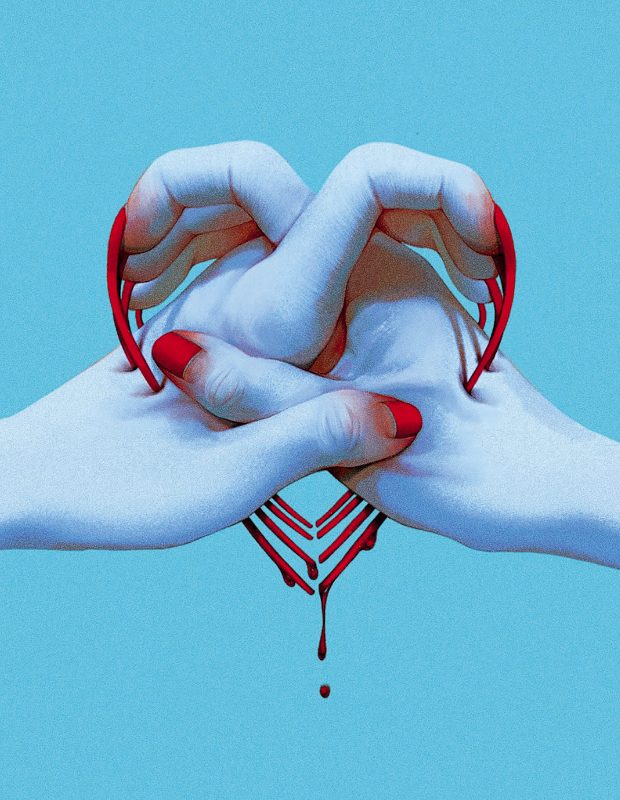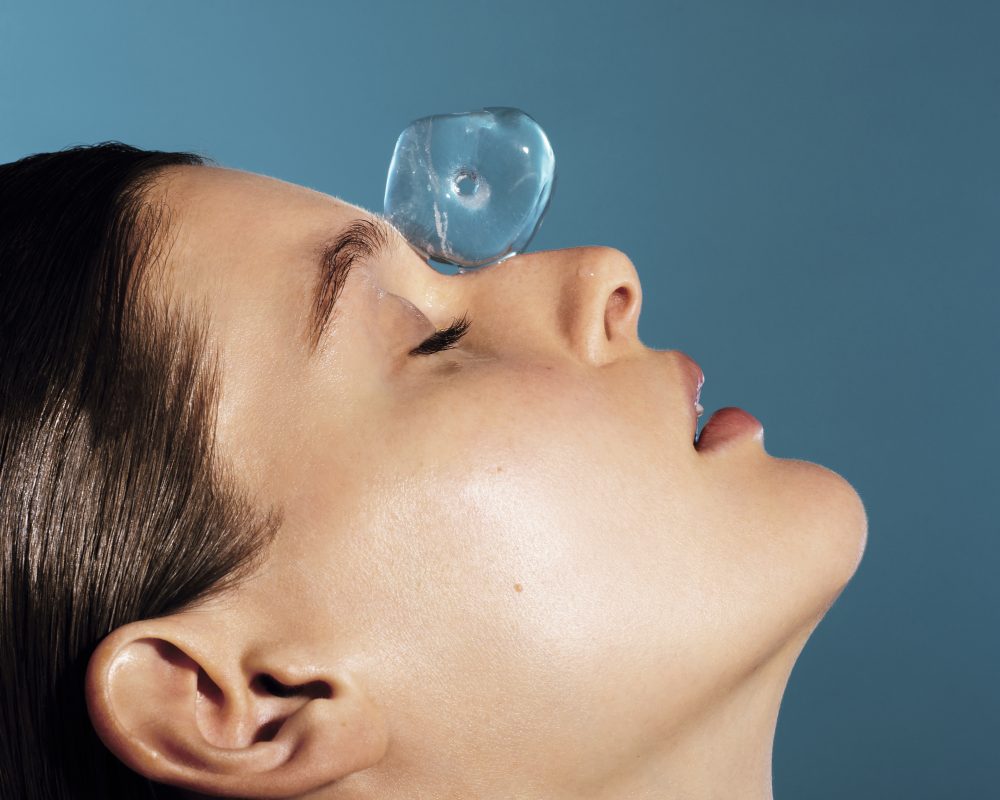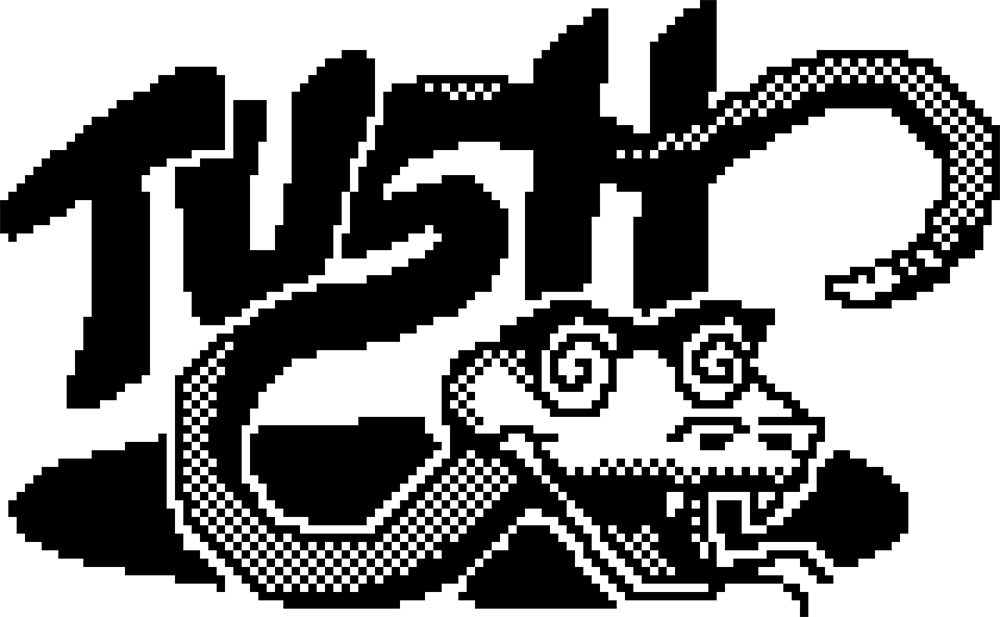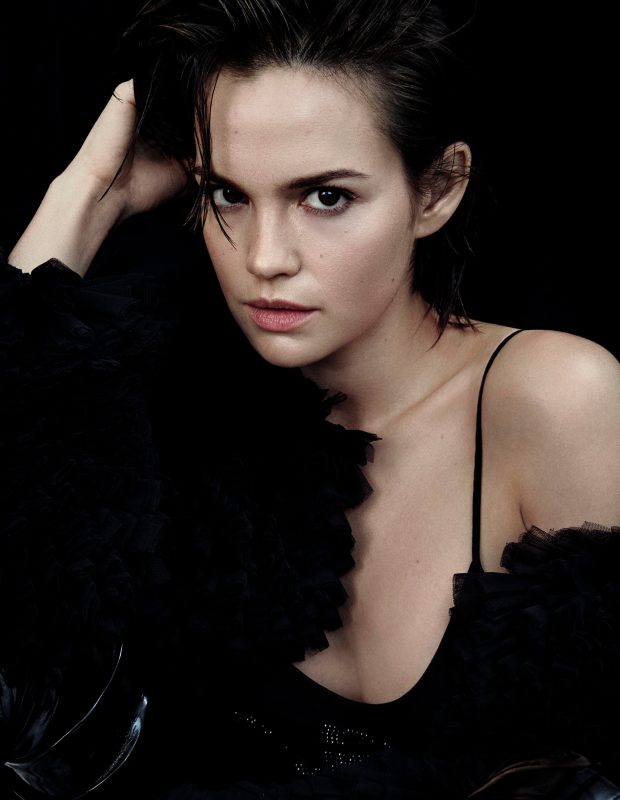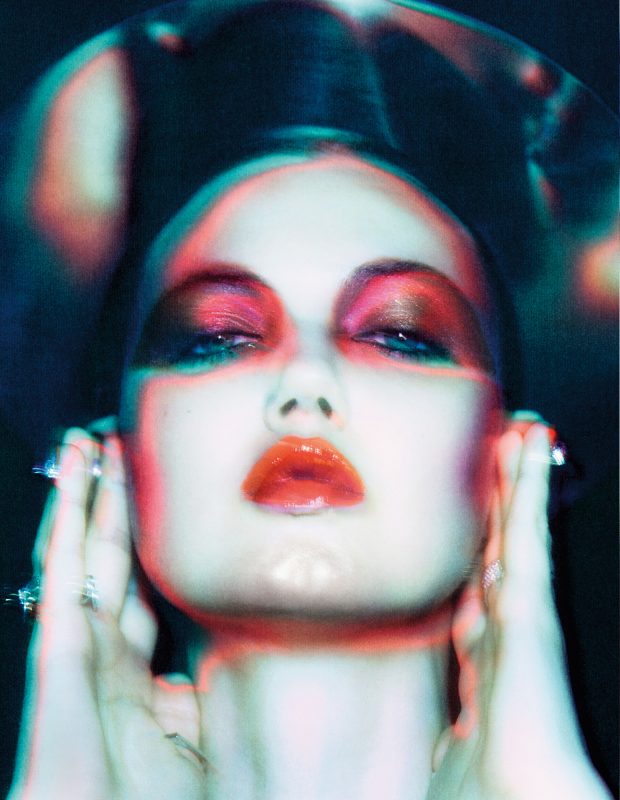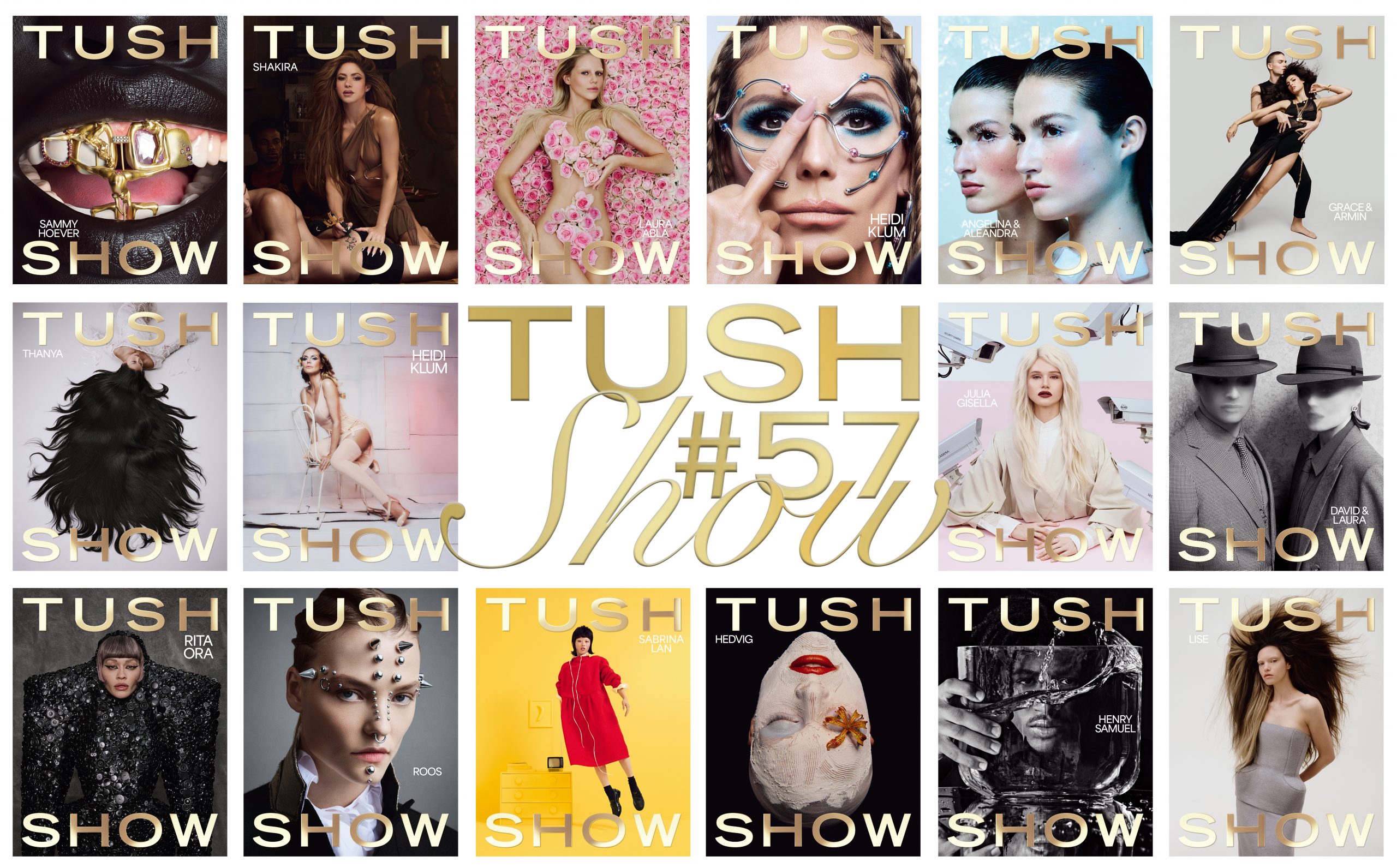Für manche ist Horror ein Genre. Für Alona Sobolevska alias IKSOXO ist es ein Zufluchtsort. 2002 in Donezk in der Ukraine geboren, sitzt sie als Kind vor Body-Horror-Filmen wie „Splinter“ und „Wrong Turn“ – verängstigt und fasziniert zugleich. Inspiriert vom fiktiven Horror ihrer Kindheit und beeinflusst vom wahren Horror des Krieges, gestaltet Alona heute ihren ganz eigenen Body-Horror.
Mittlerweile lebt die 23-Jährige in Paris und kreiert als autodidaktische SFX-Make-up-Artist Selbstporträts aus Prothesen, Masken, Nägeln und anderen Objekten. In einer Art konfrontativen Selbsttherapie verschmelzen Schmerz und Schönheit an ihrem Körper, den sie zum Medium ihrer Geschichte macht und via @IKSOXO mit ihrer Community auf Instagram teilt: Blumen, die sich durch ihre Ohren, Finger und Köpfe piercen, ultralange Fingernägel – abstrakt und bedrohlich, täuschend echte Schürfwunden aus Silikon in Herz- oder Penisformen, Latexmasken, die an Insekten oder Teletubbies erinnern. Alona Sobolevska bewegt sich zwischen Angst und Faszination, Identität und Inszenierung, Überleben und Satire. Am Ende einer jeden Produktion zerstört sie ihre Werke. Als Kommentar zur Vergänglichkeit und darauf, wie die Welt um sie herum zerstört wird.
Für TUSH #57 hat sie sich als Body-Horror-Beauty inszeniert, und unsere Autorin Fiona Frommelt hat mit ihr über Horror als Selbstheilung gesprochen, über das Schöne im Schmerz und darüber, was es bedeutet, Kunst zu machen, die nur kurz existiert und dennoch Spuren hinterlässt.
